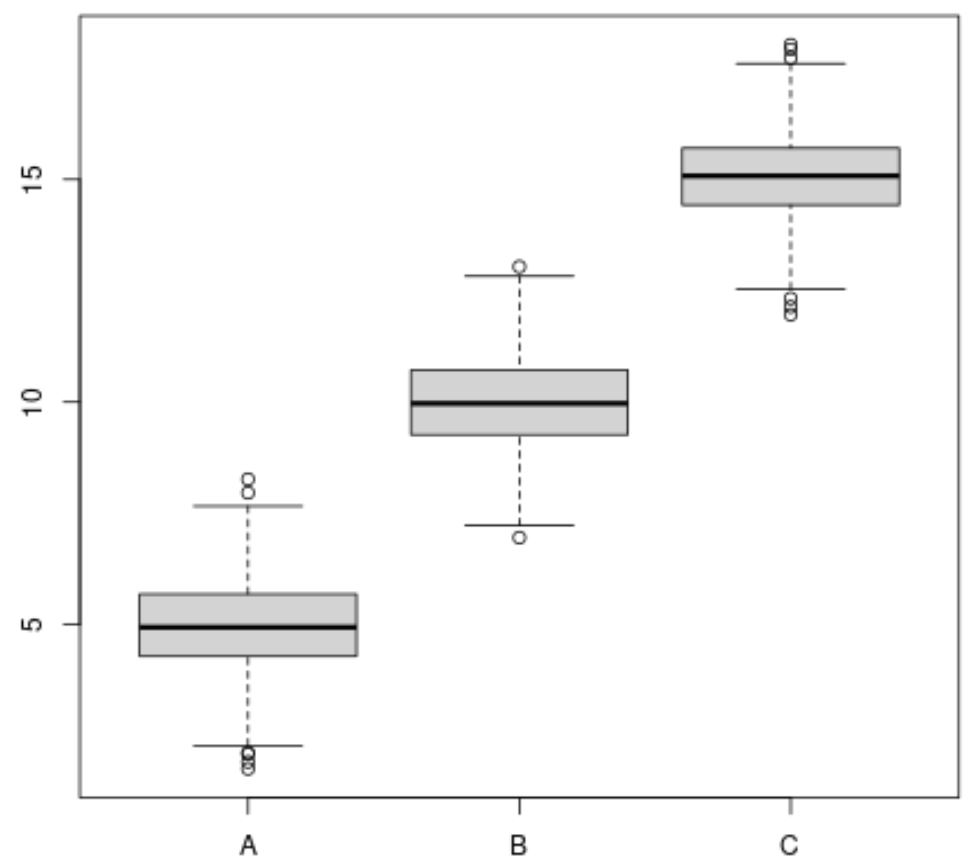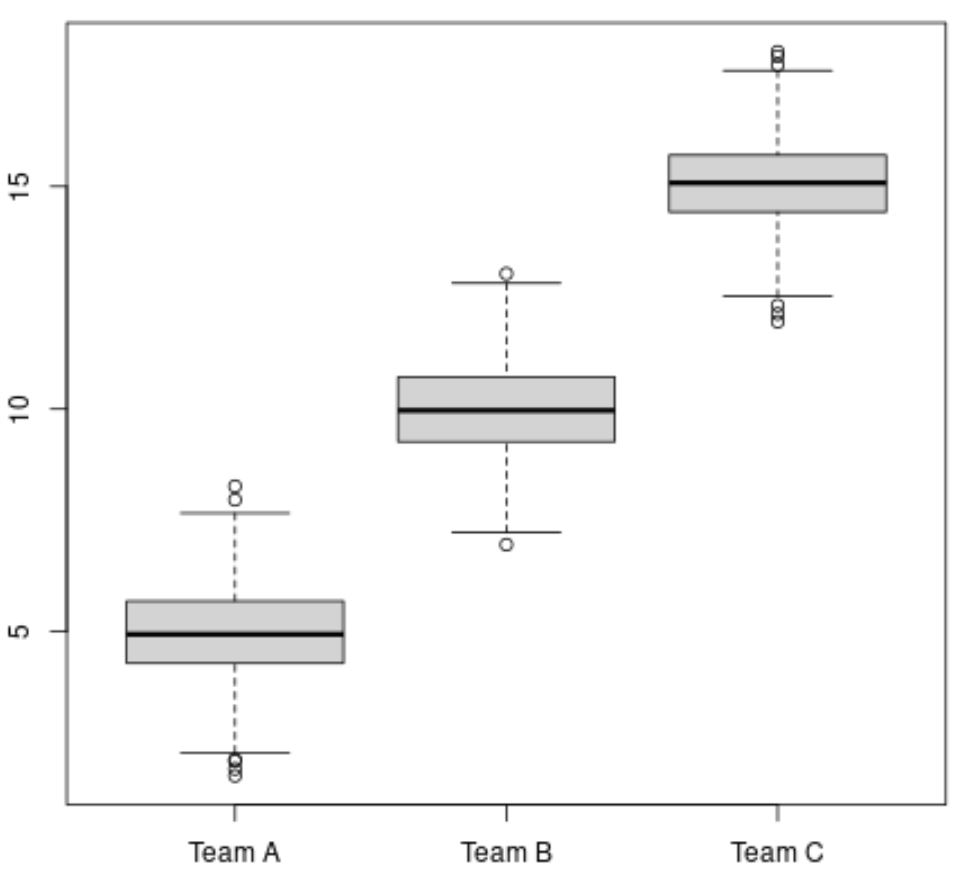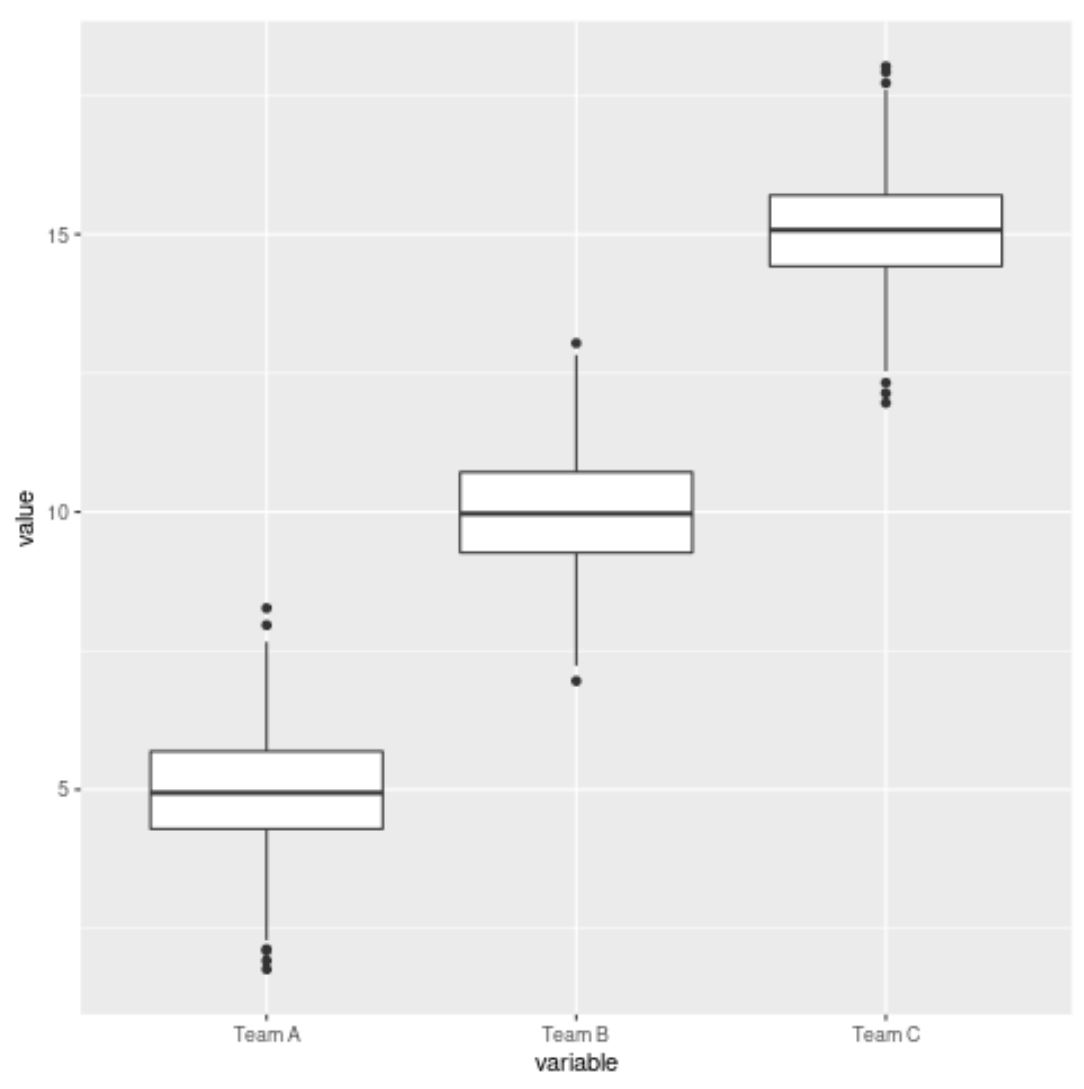R で箱ひげ図の軸ラベルを変更する方法 (例あり)
次のいずれかの方法を使用して、R の箱ひげ図の X 軸ラベルを変更できます。
方法 1: ベース R の箱ひげ図の軸ラベルを変更する
boxplot(df, names=c(' Label 1 ', ' Label 2 ', ' Label 3 '))
方法 2: ggplot2 で箱ひげ図の軸ラベルを変更する
levels(df_long$variable) <- c(' Label 1 ', ' Label 2 ', ' Label 3 ')
ggplot(df_long, aes(variable, value)) +
geom_boxplot()
次の例は、R の次のデータ フレームで各メソッドを実際に使用する方法を示しています。
#make this example reproducible
set. seeds (0)
#create data frame
df <- data. frame (A=rnorm(1000, mean=5),
B=rnorm(1000, mean=10),
C=rnorm(1000, mean=15))
#view head of data frame
head(df)
ABC
1 6.262954 9.713148 15.44435
2 4.673767 11.841107 15.01193
3 6.329799 9.843236 14.99072
4 6.272429 8.610197 14.69762
5 5.414641 8.526896 15.49236
6 3.460050 9.930481 14.39728
例 1: Base R で箱ひげ図の軸ラベルを編集する
boxplot()関数を使用して R ベースの箱ひげ図を作成すると、デフォルトでデータ フレームの列名が X 軸ラベルとして使用されます。
#create boxplots
boxplot(df)

ただし、 names引数を使用して、使用する x 軸ラベルを指定できます。
#create boxplots with specific x-axis names
boxplot(df, names=c(' Team A ', ' Team B ', ' Team C '))

names引数で指定したラベルが x 軸のラベルとして使用されることに注意してください。
例 2: ggplot2 で箱ひげ図の軸ラベルを変更する
ggplot2 で箱ひげ図を作成する前に、 reshape2パッケージのMelt()関数を使用して、データ フレームを長い形式に「溶かす」必要があります。
library (reshape2)
#reshape data frame to long format
df_long <- melt(df)
#view head of long data frame
head(df_long)
variable value
1 A 6.262954
2 A 4.673767
3 A 6.329799
4 A 6.272429
5 A 5.414641
6 A 3.460050
次に、 levels() 関数を使用して x 軸のラベルを指定し、 geom_boxplot()関数を使用して実際に ggplot2 に箱ひげ図を作成します。
library (ggplot2)
#specify x-axis names to use
levels(df_long$variable) <- c(' Team A ', ' Team B ', ' Team C ')
#create box plot with specific x-axis labels
ggplot(df_long, aes(variable, value)) +
geom_boxplot()

関数 levelを使用して指定したラベルが X 軸ラベルとして使用されることに注意してください。
追加リソース
次のチュートリアルでは、R で他の一般的なタスクを実行する方法について説明します。
R で箱ひげ図を再配置する方法
R でグループ化箱ひげ図を作成する方法
R の箱ひげ図で外れ値にラベルを付ける方法
Rで平均値を使用して箱ひげ図を描く方法